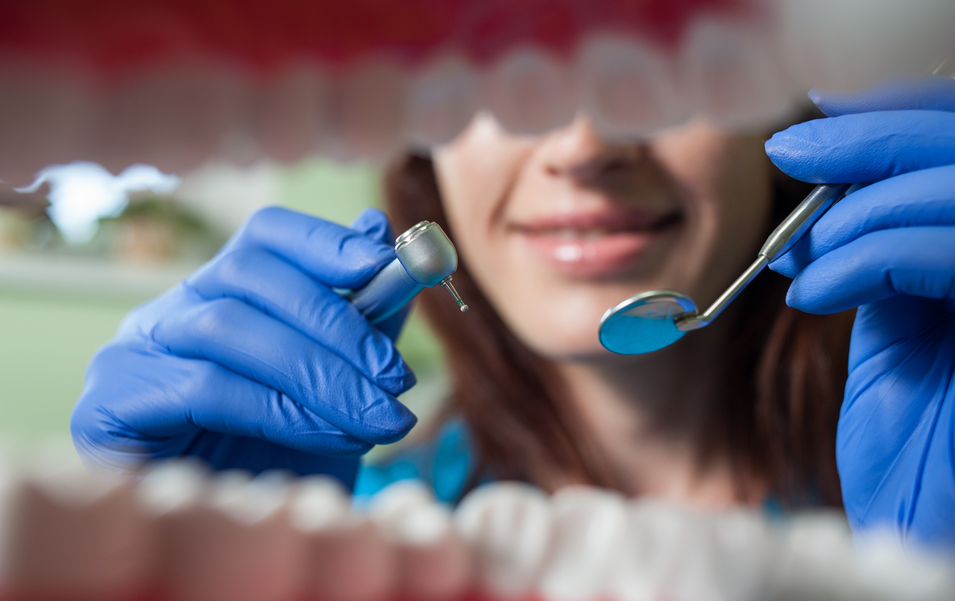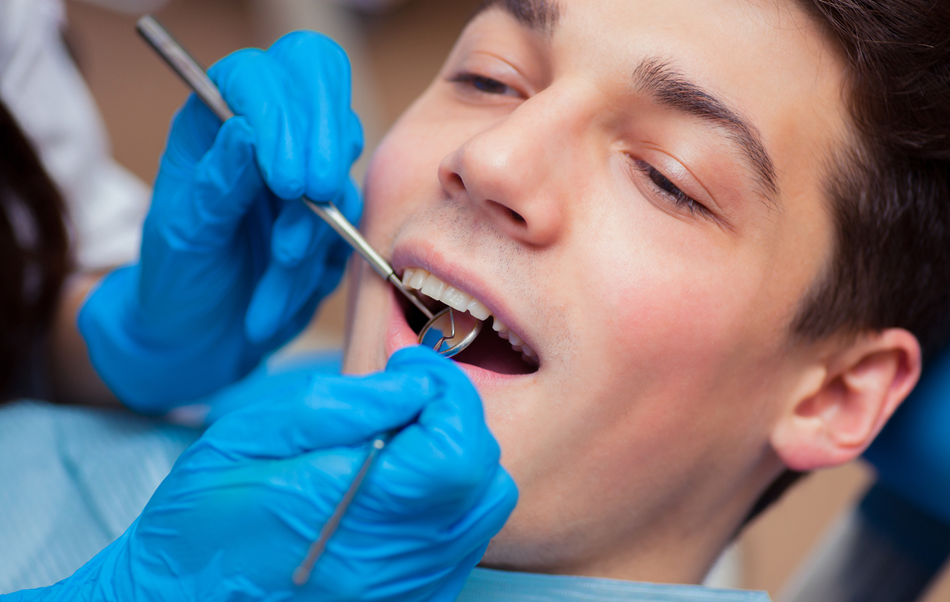What Causes Dental Cavitations ? Risk Factors & Treatment
 Daniel Samuelson - Holistic
Daniel Samuelson - Holistic
 Feb 1, 2024
Feb 1, 2024
What Causes Dental Cavitation
Cavitation, as mentioned in the context of dental health, refers to the formation of a hole or lesion within the jawbone. It is sometimes referred to as NICO (Neuralgia-Inducing Cavitational Osteonecrosis) in the medical community. Unlike cavities, which are typically associated with tooth decay, dental cavitations occur in the jawbone, often at the site of tooth extraction.
The process of cavitation is linked to the interruption of normal healing due to blockage of blood flow. These holes in the jawbone may contain necrotic (dead) bone tissue, bacteria, viruses, fungi, and even substances like mercury. In some cases, dental cavitations may not exhibit noticeable symptoms, but they have been associated with conditions such as digestive problems and chronic fatigue in certain instances.
Historically, the term cavitation was first used in the context of orthopedic research in 1930. Early dental texts recommended complete removal of necrotic bone, but this approach has evolved over time. Dr. G.V. Black, considered the father of modern dentistry, extensively described jawbone necrosis and cavitation. One of the commonly used treatment methods involves surgically scraping out cysts, toxins, unhealthy bone tissue, and abscesses from the cavitation.
It’s important to note that while dental cavitations are commonly found in the jawbone, cavitations can occur in other parts of the body as well. Factors contributing to the formation of cavitations may include clotting disorders, localized trauma, steroid use, and difficulties in proper healing.
Treatment for cavitations often involves surgical intervention to remove the affected tissue and promote proper healing. As with any medical or dental condition, it’s crucial to consult with healthcare professionals for accurate diagnosis and appropriate treatment options based on individual circumstances.
Symptoms of Cavitations
- Phantom Toothache: Pain or discomfort that seems to originate from a tooth, even if the tooth has been removed or there is no apparent dental issue.
- Facial Pain: Pain or discomfort in the face, often in the area of the jawbone or surrounding tissues.
- Migraines: Severe headaches that can be accompanied by other symptoms such as light sensitivity, nausea, and visual disturbances.
- Deep Bone Pressure or Pain: Sensation of pressure or pain within the jawbone or deep within the affected area.
- Bitter Taste: Unpleasant taste in the mouth that may be persistent and not attributed to known causes such as diet or oral hygiene.
- Halitosis/Bad Breath: Persistent bad breath that may not be resolved with regular oral hygiene practices.
- Congestion: Feeling of nasal or sinus congestion, which may be associated with the proximity of cavitations to the facial sinuses.
It’s important to emphasize that these symptoms can also be indicative of other dental or medical conditions, so a thorough evaluation by a healthcare professional, preferably a dentist or oral surgeon familiar with cavitations, is crucial for accurate diagnosis and appropriate treatment.
If someone is experiencing any of these symptoms, they should not hesitate to seek prompt medical attention to address the underlying cause and explore appropriate treatment options. Regular dental check-ups and communication with healthcare providers can help identify and address potential issues early on.
Cavitations primarily result from the blockage of blood flow to bone cells, and several factors can contribute to this condition. Here are some common causes and risk factors associated with cavitations:
- Improper Tooth Extraction: One of the most common causes is an inadequate tooth extraction procedure. If the periodontal ligament is not completely removed during the extraction process, it may contribute to the formation of cavitations.
- Dry Sockets: Dry sockets, which occur when the blood clot that usually forms after tooth extraction is dislodged or dissolves prematurely, can lead to an interruption in the normal healing process and contribute to cavitations.
- Tooth Abscesses: Untreated tooth abscesses that penetrate bone tissue can cause damage to bone cells and contribute to the formation of cavitations.
- Root Canal Infections: Infections associated with untreated root canals can also contribute to cavitations by affecting the surrounding bone tissue.
- Overheating During Dental Procedures: Excessive heat generated during certain dental procedures can lead to damage to bone cells and compromise blood flow, contributing to the formation of cavitations.
- Jawbone Trauma: Increased trauma to the jawbone, either due to accidents or other factors, can result in a reduction of blood flow to bone tissues, increasing the risk of cavitations.
- Use of Non-Steroidal Anti-Inflammatories (NSAIDs): Prolonged use of non-steroidal anti-inflammatory drugs (NSAIDs) may be a risk factor, as these medications can potentially impact blood flow to bone tissues.
- Lifestyle and Health Factors: Certain lifestyle and health factors may increase the risk of cavitations. These include long-term alcohol use, smoking, periodontal disease, osteoporosis, HIV infection, and genetic mutations.
- Genetic Defects: Some individuals may have genetic defects that result in lower-than-normal production of nitric oxide, a vasodilator. Insufficient nitric oxide levels can lead to constriction of blood vessels, reducing blood flow to the bone and contributing to cavitations.
It’s important to note that these factors may interact, and the development of cavitations can be influenced by a combination of these elements. Seeking professional dental care, especially during tooth extractions, and addressing oral health issues promptly can help reduce the risk of cavitations. Additionally, individuals with specific risk factors may benefit from early intervention and preventive measures.
Cavitation and Overall, Health
The potential impact of cavitations on overall health, even in the absence of obvious symptoms, is a subject of ongoing research and discussion in the medical and dental communities. While cavitations may not always manifest noticeable symptoms, there is growing awareness that they can have implications for overall health due to various factors:
- Toxins, Viruses, and Bacteria: Cavitations can harbor a variety of harmful substances, including toxins, viruses, and bacteria. The presence of these pathogens in the jawbone may contribute to infections, which can have systemic effects on the body.
- Immune Function: Infections associated with cavitations may affect immune function. The immune system’s response to chronic infections in the jawbone could potentially contribute to systemic inflammation and impact overall immune health.
- Autoimmunity: Some studies and anecdotal reports suggest a potential association between cavitations and autoimmune conditions. The chronic inflammation and immune system activation resulting from cavitations may contribute to or exacerbate autoimmune disorders. Conditions such as lupus, rheumatoid arthritis, psoriasis, and inflammatory bowel disease have been mentioned in this context.
It’s important to note that while these connections are being explored, the scientific evidence linking cavitations directly to specific autoimmune conditions is not yet fully established. Research in this area is ongoing, and more studies are needed to better understand the potential systemic effects of cavitations.
If someone is concerned about cavitations and their potential impact on overall health, it is advisable to consult with healthcare professionals, including dentists, oral surgeons, and physicians. Thorough evaluation, appropriate diagnostic procedures, and individualized treatment plans can help address any dental or health concerns associated with cavitations.
It’s crucial to consider cavitations as part of the broader picture of oral and systemic health and to approach their diagnosis and management in collaboration with healthcare providers. Regular dental check-ups and open communication with healthcare professionals can contribute to the early detection and management of potential issues.
The association between osteonecrosis, cavitations, and other medical conditions is an area that continues to be studied, and research is ongoing to understand the potential links.
Here are some conditions that have been mentioned in association with osteonecrosis and cavitations:
- Sickle Cell Syndrome: Sickle cell disease is a genetic disorder that affects the shape of red blood cells. It can lead to reduced blood flow, which may contribute to osteonecrosis.
- Heart Disease: Cardiovascular conditions that affect blood flow may be linked to osteonecrosis. Poor blood circulation can impact bone health and contribute to necrosis.
- Pancreatitis: Inflammation of the pancreas, known as pancreatitis, has been suggested to have potential associations with osteonecrosis, possibly due to systemic inflammation.
- Lyme Disease: Lyme disease, caused by the bacterium Borrelia burgdorferi, can lead to joint inflammation and, in some cases, may be associated with osteonecrosis.
- Gaucher’s Disease: Gaucher’s disease is a rare genetic disorder that can result in the accumulation of certain substances in the bones, potentially affecting bone health.
When cavitations go undetected, and if they lead to osteonecrosis, the diagnosis may indeed become more complicated. The systemic effects of chronic inflammation and the presence of toxins in the jawbone may contribute to overall poor health. The seemingly unrelated symptoms and risk factors associated with other medical conditions could further complicate the diagnostic process.
It’s essential for individuals to be proactive about their oral health and seek regular dental check-ups. Dentists and oral health professionals can use various diagnostic tools to identify potential issues, including X-rays, imaging studies, and clinical examinations. Early detection of cavitations and appropriate management may help prevent complications such as osteonecrosis and mitigate potential systemic effects.
If someone has concerns about their oral health, especially related to cavitations, and experiences symptoms or has risk factors associated with other medical conditions, consulting with both dental and medical professionals is crucial for a comprehensive evaluation and appropriate care. Integrated healthcare approaches can provide a more complete understanding of potential connections between oral health and overall well-being.
How are Cavitations Diagnosed?
Diagnosing cavitations can indeed be challenging, especially because they may not always present noticeable symptoms. Here are some methods commonly used for the diagnosis of cavitations:
- X-rays: X-rays are one of the most common diagnostic tools for cavitations. They can reveal abnormalities in the jawbone, such as areas of necrosis or cysts.
- MRIs (Magnetic Resonance Imaging): MRIs can provide detailed images of soft tissues and bones, helping to detect abnormalities and assess the extent of damage.
- CT Scans (Computed Tomography): CT scans offer three-dimensional images and can provide a detailed view of the bone structure, aiding in the diagnosis of cavitations.
- Biopsy: A biopsy involves taking a small sample of tissue for examination. In the context of cavitations, a biopsy can help confirm the presence of necrotic tissue and identify any potential infections.
- Bone Scintigraphy: This nuclear medicine imaging technique involves injecting a small amount of radioactive material into the bloodstream to help visualize blood flow and bone metabolism. It can aid in detecting areas of decreased blood flow in the jawbone.
- Ultrasound: Ultrasound imaging may be used to evaluate soft tissues and blood flow in the affected area.
- Cone Beam 3D CT Scans: These specialized CT scans provide high-resolution, three-dimensional images of the jaw and surrounding structures, offering a detailed view of cavitations.
- Panoramic Radiographs: Panoramic radiographs are often used to examine the entire jawbone for signs of necrosis or other abnormalities.
Once cavitations are diagnosed, various treatment options may be considered:
- Debridement: Removal of necrotic tissue, cysts, and abscesses to promote healing and eliminate harmful substances.
- Laser Therapy: Non-invasive and precise laser therapy may be used to treat cavitations, with the advantage of being less painful than traditional methods.
- Ozone Therapy: Ozone and oxygen may be employed to combat bacteria and clear toxic substances in a non-invasive manner.
- Surgery: In cases where non-invasive methods are insufficient, surgery may be recommended. This involves making incisions to remove infected tissue, followed by disinfection.
The choice of treatment depends on the severity of the cavitations, the presence of infections, and the patient’s overall health. It’s crucial to consult with dental professionals for a thorough evaluation and to determine the most appropriate course of action based on individual circumstances.
How to Prevent Cavitations
Preventing cavitations involves a combination of maintaining good oral hygiene practices, being proactive about dental care, and addressing potential risk factors. Here are some preventive measures to consider:
- Oral Hygiene:
- Brush your teeth twice a day using fluoride toothpaste.
- Floss daily to remove plaque and debris from between your teeth.
- Use an antiseptic mouthwash to help reduce bacteria in the mouth.
- Consider using an electric toothbrush for more effective plaque removal.
- Regular Dental Check-ups:
- Schedule regular dental check-ups to monitor your oral health and identify potential issues early on.
- Inform your dentist about any concerns or symptoms you may be experiencing.
- Proper Dental Work:
- If you require dental procedures involving anesthesia, discuss the use of epinephrine with your dentist. It’s a vasoconstrictor used in some local anesthetics. If you have concerns about its use, inquire if alternative anesthetics can be considered.
- Awareness and Education:
- Raise awareness about cavitations and their potential impact on overall health.
- Stay informed about oral health conditions and treatment options.
- Be proactive in seeking information and asking questions during dental visits.
- Early Detection:
- If you suspect cavitations or experience symptoms such as phantom toothaches, facial pain, or migraines, seek prompt medical attention.
- Early detection can help prevent the progression of cavitations and minimize potential complications.
- Follow-up on Treatment:
- If you have undergone cavitation treatment, ensure that you follow up with your healthcare provider to assess the effectiveness of the intervention.
- If you believe your treatment wasn’t handled properly, consult with your dentist or seek a second opinion.
- Holistic Approach:
- Consider adopting a holistic approach to oral and overall health, addressing factors such as nutrition, lifestyle, and stress management.
By incorporating these preventive measures into your oral care routine and maintaining open communication with your dentist, you can contribute to a healthier oral environment and reduce the risk of cavitations. If you have specific concerns or symptoms, it’s essential to consult with dental professionals for personalized guidance and care.
To view experienced cavitation dentists: Click Here
Trending News
-

New Device Detects Gingivitis Early Admin
-

Non Toxic Dental Fillings : BPA, BHT, HMBP, DPCL, TPSb, HEMA, TEGDMA Free Admin
-

Essential Questions for Your Oral and Maxillofacial Surgeon Admin
-

Why Root Canals Fail? | The Usual Suspects Meredith Y. Newman Endodontist Fresno
-

Exploring Dental Implants as a Tooth Replacement Option Admin
